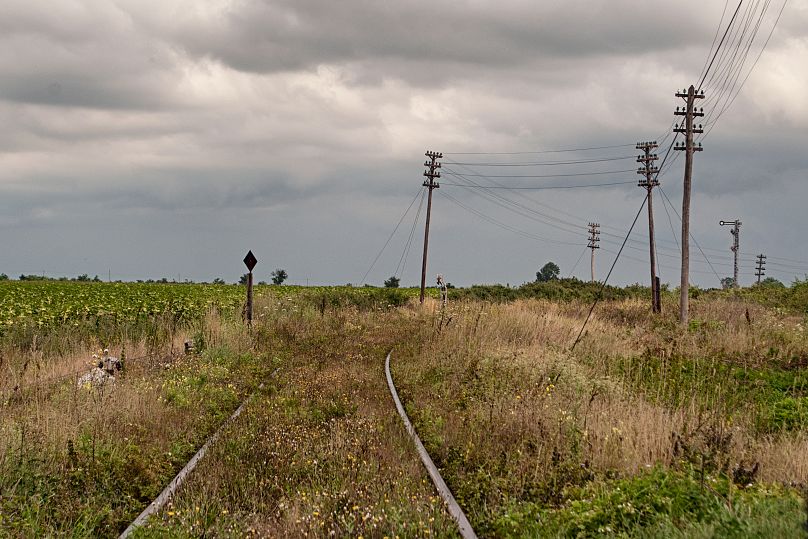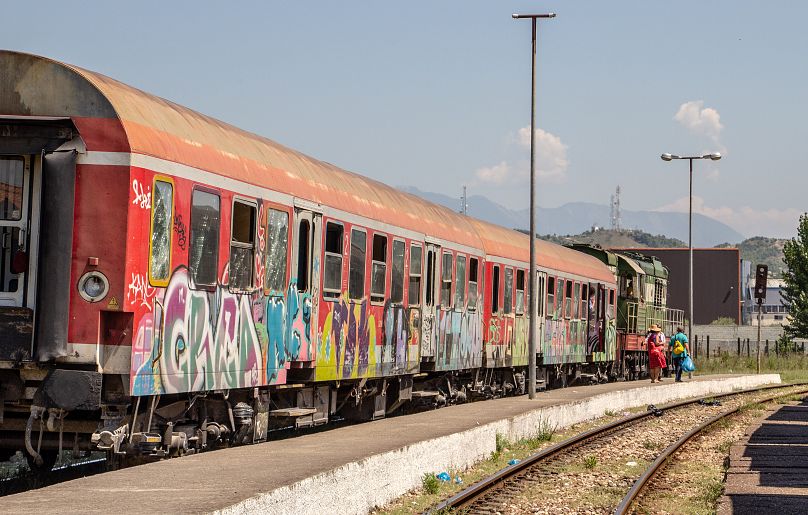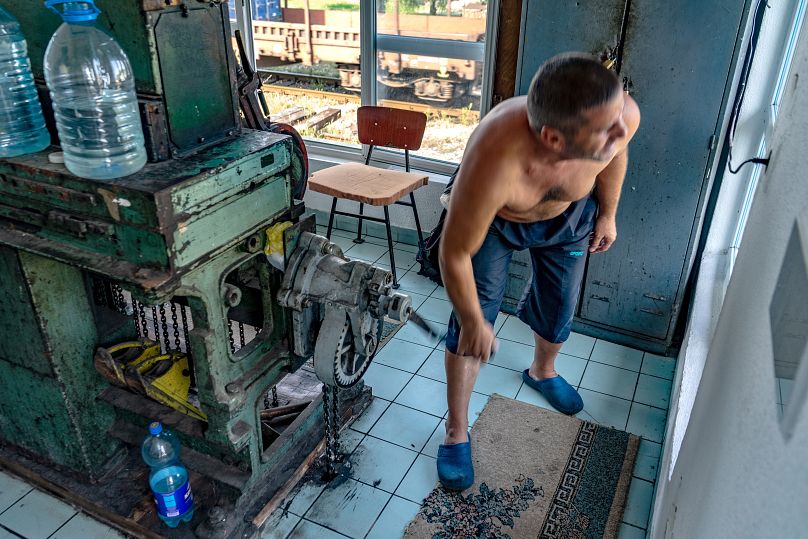"The next train on platform one will arrive.... in four months' time."
From France's high-speed TGVs to Moldova's Soviet-era services with wooden benches, Europe's train network is a patchwork of varying standards.
It's particularly bad in the Balkans, according to a World Economic Forum (WEF) report, which ranked services on frequency, punctuality, speed and price.
In Albania, not a single passenger train circulated between November 2019 and early February due to a lack of funds to buy locomotive fuel. The state-owned rail company — HSH — gave no official notice for the suspension of service and people were only informed they had resumed after sightings of trains were posted on a Facebook group.
The WEF report gave Albania 1.2 points out of seven, behind Serbia, while Bosnia and Herzegovina and North Macedonia each scored two.
Among EU member states, Bulgaria, Romania, Slovenia and Greece fare the worst, according to the European Commission, while the best services can be found in the Netherlands, Finland, Germany and Spain.
Perhaps unsurprisingly, it's also in the east that the number of incidents and reports of injuries is the highest. All Central and Eastern member states have higher rates than the EU's average, according to the latest report from the European Union Agency for Railways.
In some case, such as Hungary and Bulgaria, the number of incidents is three times higher. In Romania and Estonia, it's five times the EU's average.
'Not a walk in the park'
In Bulgaria, the train travels - but only three times a week - the 34 kilometres between the towns of Kyustendil and Gueshevo. It takes 1 hour and 40 minutes.
The poor state of the infrastructure only allows trains to travel at a maximum speed of 25 km/h, dropping to 15 km/h in certain sections.
Some 700 kilometres north, the 07.05 am train from Oradea to Arad is one of the thousands of regional services circulating on the Romanian railway network.
The railcar shepherding passengers through these rural parts is a pre-war relic from 1937 that in most western European countries would be in a museum or used for tourist lines only.
Like the other trains on the line, it travels the 120 kilometres separating the two cities in two hours and 58 minutes, travelling at an average speed of 40 km/h.
"Occasionally you see some train enthusiast from Germany taking pictures of this railcar," Ion, stationmaster of Zerind, a village halfway through the service, told Euronews.
"For those who have to take the train every day, however, this trip is not a walk in the park," he added, moving levers in front of his workbench. Behind him, a large machine signals the arrival of the crossing train.
According to estimates from the profit.ro financial portal, Romanian railways accumulated 4.5 million minutes of delay in 2017 alone — equating to 8.6 years. About 53 million passengers travelled by train in the country last year, according to the International Union of Railways.
'Trains are falling apart'
In countries such as Bulgaria or Romania, second or third-hand trains discarded in the early 2000s by the French, English, German or Danish railways circulate daily. But outside the borders of the union, the situation worsens further.
Valon is a machinist from Durres, Albania. While waiting for his colleagues, who operate a freight train, he told Euronews that every single train is vandalised and so some carriages have no light and windows are broken after rocks were thrown at them.
"The locomotives are also falling apart," he went on, pointing to the headlights. "They also steal the headlight bulbs."
In Moldova, old Soviet-era machines are used alongside railcars from the 1960s in which passengers sit on wooden benches.
In Bosnia and Herzegovina, some mining plants move coal every day on steam locomotives from 1942.
Even cross-country services don't fare much better. During the last decade, the services that connected Sarajevo to Belgrade, Zagreb or Budapest have been cancelled.
"Until a few years ago I went to visit my mother on the train," Brano, a Croatian now working in Sarajevo, said. "Today, I have to use the bus and make at least one change. It was a long journey even by train but now it's also uncomfortable."
Bridging the gaps
But change is coming. Massive work is now underway to upgrade the infrastructure thanks to EU funds. The aim is to bring these networks up to European standards so that trains can circulate at up to 160 km/h in some parts.
In North Macedonia, Serbia, Montenegro, Bosnia and Herzegovina, new Chinese, Russian and Spanish rolling stock have been purchased to integrate the fleet of locomotives and carriages.
However, these upgrades mostly benefit the main traffic arteries with the EU keen to strengthen the trans-European transport network and reduce the safety and speed gaps with the rest of the bloc.
Passengers who live far from these main routes are likely to continue travelling on open-doors, post-war trains.














